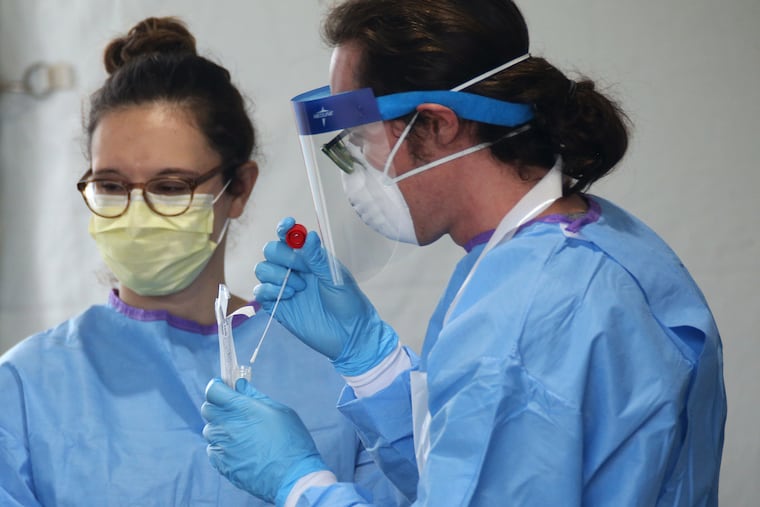Coronavirus nursing shortage? Three ways to get more nurses — now. | Expert Opinion
Nursing historians look at past solutions to increase the number of nurses in America.

As historians of nursing, we know that during critical times, there have never been enough nurses to care for patients in hospitals.
There have never been enough to care for those sick at home, or for those discharged early to make room for those suffering through a pandemic, like the one we are facing now as the coronavirus continues to spread across the globe.
» READ MORE: Philly nurse: Pa. factories should start making desperately needed medical supplies | Expert Opinion
There have also never been enough to care for those who will continue to experience heart attacks, strokes, and drug and alcohol overdoses, to name just a few of those crises. And there have never been enough to meet the real health guidance that patients at home still need when confronting new symptoms of congestive heart failure, or new parents when perplexed about their infant’s fever.
Nursing shortages in history
We can cite numerous historical examples — from recurring yellow fever epidemics that long plagued our country, to World War I, to the 1918 influenza pandemic. World War II offers the most well-documented examples that not only demonstrate how serious our real problem can become but can also suggest ways to move forward to meet this looming and dangerous shortage.
» READ MORE: Physician burnout existed before coronavirus. It’s about to get worse. | Expert Opinion
Even before the United States formally entered the war, leaders in the federal government, public health, and nursing knew their history and anticipated a shortage as they planned for the health and illness needs of both the military and the civilian population. Quite quickly after the declaration of war, they realized their recruitment plans to entice more women into the discipline had failed to meet ever-escalating demands. The result was a landmark piece of federal legislation in 1943, the Cadet Nurse Corps Bill that offered free nursing education to white and black women willing to serve as nurses in the military or stateside “for the duration” of the war.
This was still not enough. By 1943, President Franklin D. Roosevelt planned to sign the first executive order ever that would extend the draft to white women nurses. Almost overnight, black and white nurses mobilized to attack the military’s segregation policies. “Why,” to paraphrase their campaign, “should we draft white nurses when we have over 9,000 black nurses ready and willing to serve?” The Army Nurse Corps immediately desegregated and black nurses, for the first time in our history, traveled overseas to nurse sick and wounded soldiers.
Quelling nursing shortages amid coronavirus
What do these experiences suggest we need to do today to meet these acutely looming shortages?
First, we need to remove all barriers to nursing practice. In the 1940s, these barriers were entrenched Jim Crow laws. Today, they are state practice regulations that prevent nurses, especially nurse practitioners, from practicing to the full extent of their training. States need to follow Tennessee’s example and remove these barriers immediately.
Then we need to tap the talented reserve of senior nursing students just a few short months away from graduation. Today, it is easy to forget that nursing students once provided all the nursing care hospitals provided.
We should not return to that practice, but we may look history to see how federal legislation temporarily overrode state laws and sent senior nursing students into sites where they could both provide needed care and meet their final graduation requirements. However, we do not need to wait for national initiatives. Each state regulates its own nurses. We need them to change their protocols.
» READ MORE: Physicians facing coronavirus: ‘This is a war. We are soldiers.’ l Expert Opinion
As we look to the future, we may need a national nursing reserve corps to mobilize the deployment of nursing services in times of emergencies and epidemics. And we now need to be open to the ways in which our own biases, assumptions, and traditions may blind us to men and women ready and willing to serve at this very moment.
Nursing needs everyone at this particular moment, and we need to look to history to find solutions to this not unprecedented challenge.
Cynthia Connolly is the Rosemarie Greco professor of nursing at the University of Pennsylvania School of Nursing. Patricia D’Antonio is the Carol Ware professor of nursing and the director of the Barbara Bates Center for the Study of the History of Nursing at the University of Pennsylvania School of Nursing. Julie A. Fairman is the Nightingale professor of nursing at the University of Pennsylvania School of Nursing.